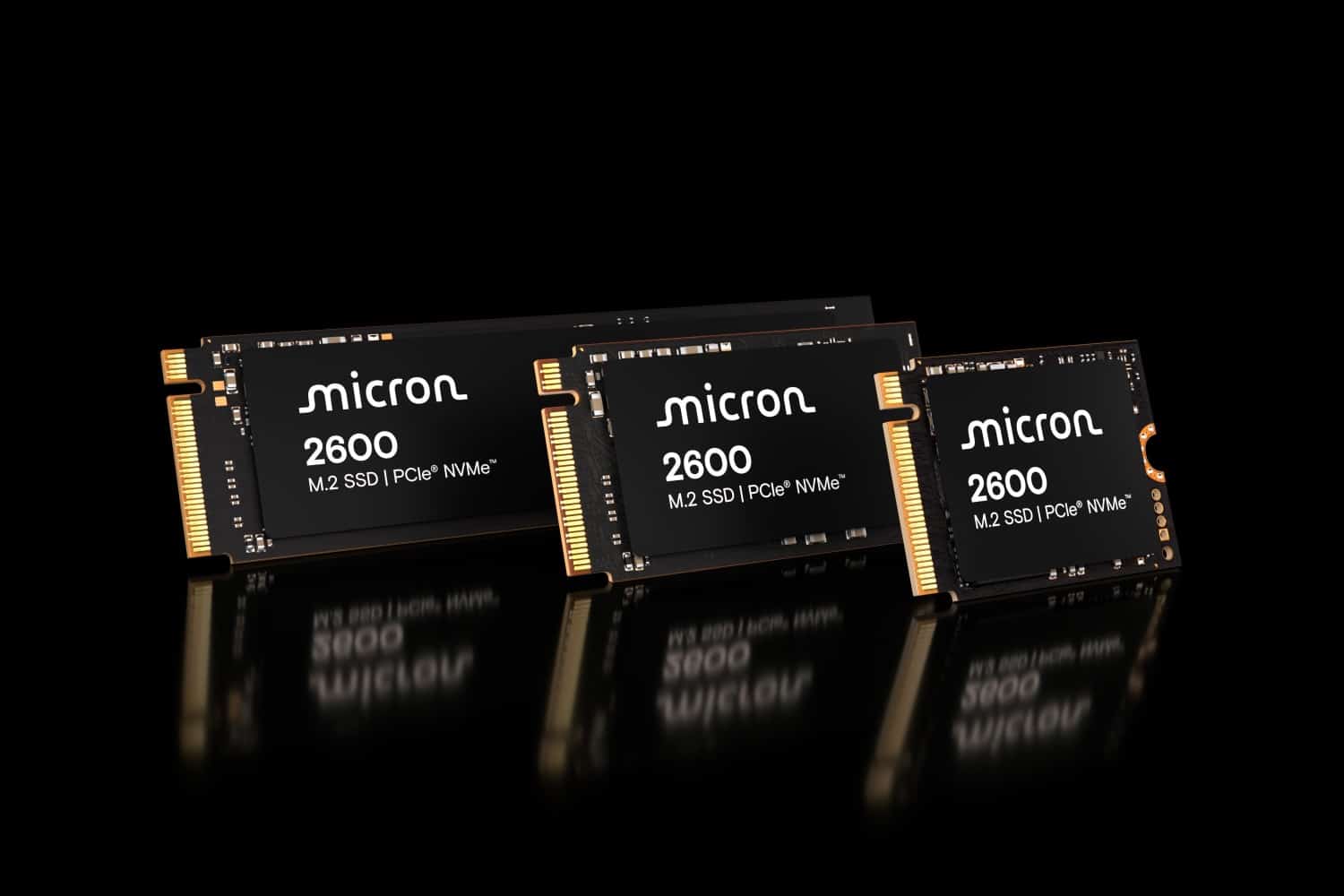Micron Technology announced this week the launch of its new Micron 2600 NVMe™ SSD, aimed at the OEM market and specifically designed for mid-range devices that demand high storage performance. This new model marks a milestone as the first SSD equipped with ninth-generation QLC memory (G9), combined with the innovative Adaptive Write Technology™ (AWT). This development promises to significantly improve write performance, bringing it closer to that of TLC drives while maintaining the cost advantages of QLC technology.
The objective is clear: to offer an economical solution without sacrificing high performance, in a context where fast storage is crucial for demanding applications like artificial intelligence, gaming, and content creation.
Improved Performance with Hybrid Architecture and Adaptive Control
One of the major advancements of the Micron 2600 lies in its integration of AWT, which intelligently manages a multi-level cache (SLC, TLC, and QLC) to accelerate writing. According to Micron, this allows for sustained high speeds even when writing large volumes of data, such as up to 800 GB on a 2 TB drive without notable drops in performance.
Lab results support these improvements: up to 63% faster in sequential writing and 49% faster in random writing compared to leading QLC and TLC drives available on the market.
The key behind this enhancement also lies in the six-plane architecture of the G9 QLC memory, which allows greater parallelism and simultaneous read/write operations, achieving transfer speeds of up to 3.6 GB/s, according to Micron’s internal figures.
Advantages for Users and Manufacturers
The new Micron 2600 SSD substantially improves key aspects of daily use:
- Faster boot times and greater system responsiveness.
- Accelerated AI model loading, crucial for emerging applications in AI-enabled PCs.
- More efficient installation of operating systems, reducing times in production and enterprise deployment environments.
- Smoother performance in both common and demanding tasks, like content creation, casual gaming, and general productivity.
According to tests with PCMark® 10, the new model achieved up to 44% better scores and 43% more bandwidth compared to value TLC drives from competitors.
Ideal for Ultra-Thin Laptops and Handheld Devices
The Micron 2600 is available in multiple form factors (22×30 mm, 22×42 mm, and 22×80 mm) and capacities from 512 GB to 2 TB, with a single-sided design. This makes it ideal for ultra-thin laptops, compact workstations, and portable gaming devices, where space and power consumption are critical.
Industry Opinions: Backing from AMD, Intel, IBM, and More
Various industry leaders have endorsed Micron’s initiative. AMD highlights that this SSD "provides capacity and responsive performance for modern computing." IBM claims that G9 QLC memory could "set a new performance benchmark in its category." Intel has included the Micron 2600 on its list of approved components, and Pure Storage has begun integration testing for enterprise and hyperscale environments.
Collaboration with Phison, whose E29T controller maximizes the capabilities of G9 NAND memory, and WithSecure, which values the thermal and energy efficiency of such solutions in enterprise settings, is also notable.
A Clear Commitment to Democratizing SSD Performance
With this initiative, Micron aims to democratize access to fast and efficient storage, even in budget-friendly ranges. The introduction of AWT alongside G9 QLC makes the Micron 2600 SSD one of the most promising solutions of the year, both for equipment manufacturers and users demanding increasing capacity and speed without compromising on price.
Source: investors.micron.com

